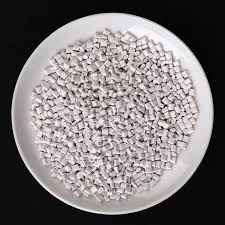The Role of Ingredients in Pharmaceutical Products
Pharmaceutical products are complex formulations composed of various ingredients, each with a specific role in ensuring the safety, efficacy, and stability of the final product. Understanding these ingredients and their functions is crucial for the development, regulation, and use of medicines. This article explores the key components of pharmaceutical products, their importance, and how they interact to create effective treatments.
Active Pharmaceutical Ingredients (APIs)
At the heart of any pharmaceutical product is the Active Pharmaceutical Ingredient (API). APIs are the biologically active components that provide the therapeutic effect. They can be derived from natural sources or synthesized chemically. For instance, aspirin, one of the most commonly used medications, is an API that provides relief from pain, inflammation, and fever.
The selection of an appropriate API is critical. It must demonstrate the desired pharmacological effect and exhibit safety profiles that minimize risks of side effects. The development process involves extensive research and clinical trials to ensure that the API performs optimally in treating specific conditions.
Excipients
In addition to APIs, pharmaceutical products contain excipients, which are inactive substances that serve various functional roles in the formulation. Excipients can enhance the delivery of the API, improve stability, and facilitate manufacturing processes. They also contribute to the product's appearance, taste, and texture, making them more acceptable to patients.
Common excipients include fillers, binders, lubricants, and preservatives. For example, lactose is often used as a filler in tablets, while magnesium stearate serves as a lubricant to ensure smooth tablet formation. The choice of excipients is guided by regulatory requirements and the intended route of administration, such as oral, injectable, or topical formulations.
ingredients in pharmaceutical products

Formulation Considerations
The formulation of a pharmaceutical product involves combining APIs and excipients in precise ratios to create a stable and effective product. Several factors influence the formulation process, including the physical and chemical properties of the ingredients, the intended use, and patient compliance considerations.
The stability of the final product is paramount. Factors such as temperature, humidity, and light exposure can affect the integrity of both the API and the excipients. For instance, some APIs are sensitive to moisture and may require the use of specialized excipients that act as moisture barriers.
Quality Control and Regulation
Pharmaceutical products are subject to rigorous testing and regulation to ensure their quality and safety. Regulatory bodies, such as the U.S. Food and Drug Administration (FDA) and the European Medicines Agency (EMA), establish guidelines that govern the formulation, manufacturing, and labeling of pharmaceutical products.
Quality control measures include testing for potency, purity, and consistency. Each batch of pharmaceutical products must meet specified standards to ensure that it contains the correct amount of API and that excipients do not introduce contaminants or variability in the final product.
Conclusion
In conclusion, the ingredients in pharmaceutical products play an essential role in their safety and effectiveness. The collaboration between APIs and excipients must be meticulously planned and executed to produce formulations that meet regulatory standards and provide relief to patients. As the pharmaceutical industry continues to evolve, advancements in ingredient technologies and formulation science will further enhance the development of innovative and effective medications. Understanding the dynamics of these ingredients is critical for healthcare professionals, researchers, and policymakers as they strive to ensure the best health outcomes for patients worldwide.

